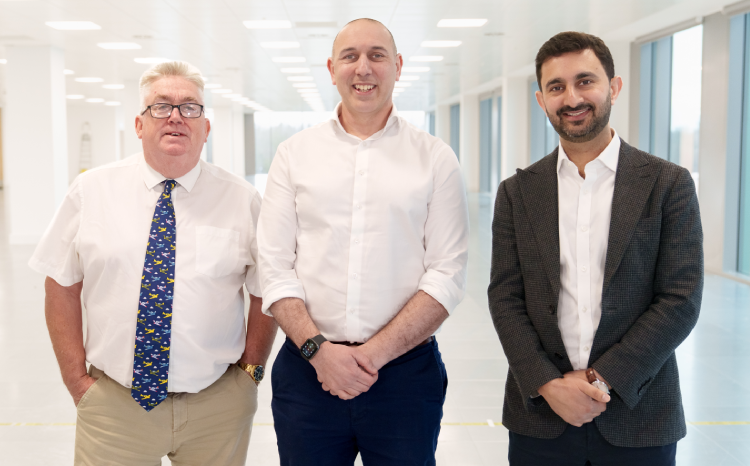CCIO profile: Martin Gray
- 10 March 2015

Ask Martin Gray for the key piece of advice he would give other people thinking of becoming a chief clinical information officer, and he readily admits it’s one that has been proffered by others on multiple previous occasions.
“Clinical IT projects should not be run as IT projects, but should be run as clinical transformation projects,” argues Gray, a paediatric intensivist at St George’s University Hospitals NHS Foundation Trust.
“That’s been said many times before; but you can’t underestimate how important it is. Also ensuring that you have executive buy in.”
Structure matters
Ask Gray how he has gone about doing that, however, and the answer is something of a novel one: he has tied executive and service improvement involvement very formally into governance structures.
“I’ve been in post just over a year now, and my main priority was to put the governance structure in place,” he explains.
“Rather than rushing ahead with lots of new projects – be they information technology or informatics – I wanted to try and get some kind of structure in place so that we were following due process when people came to us with proposals for new IT content, databases and so on.”
The result is a three-tiered structure. At the top is the clinical systems portfolio board, chaired by Gray and with a membership encompassing senior clinicians and members of the trust’s executive.
“This board essentially sets the strategic direction of IT,” he explains. “It takes a high level look at the progress of the various programmes of work.”
Beneath it sits the clinical informatics operations council (“I stole the name from an American governance model that I’d been reading about,” admits Gray with a laugh). This is a co-chaired committee.
“It’s co-chaired by me representing clinical IT, the director of information, and also the lead for service improvement. The idea is that this committee does the work, if you like.
“So if a clinician has a request for some functionality, they would come to this committee and pitch their idea. Then we would adjudicate, make sure that the idea is going to bring value to the organisation, going to bring efficiency savings, going to improve patient care and so on.”
He sees many benefits in having a CCIO, director of information and service improvement lead jointly making such adjudications.
“What you tend to find within large organisations is that you have lots of parallel projects running. By having service improvement and informatics at the table, you can make sure that the functionality will link directly with our data warehouses and so on, and that it will tie in with the direction of travel or strategy for service improvement of service development.”
Millennium firsts
Also at the table: clinical IT leads from each of the organisation’s divisions. “The idea is that in that way we link in with the divisional hierarchy and that there’s a two way communication between what we’re trying to do in our two committees, and what the divisions are trying to do.”
In most instances, what they are all trying to do to expand the organisation’s use of Cerner’s Millennium system. St George’s went live with the system back in March 2010, but has more recently significantly extended its functionality.
“We deployed our patient administration functionality in 2010, and then order comms for diagnostics and radiology in 2012, and we’ve now added to that clinical documentation and e-prescribing and medications administration,” explains Gray.
“Roughly 44% of the hospital is now live with that clinical functionality. [In the coming months and years], we’d like to complete the rollout across the remaining 550 or so acute beds.”
In the meantime, there has been a UK first in the paediatric intensive care unit, where Cerner’s critical care solution has been fully implemented and monitoring equipment integrated with the Millennium EPR.
“We have quite a lot of critical care beds in this hospital – five critical care units – and what we wanted to do was see whether it was feasible to run a critical care using Millennium as the platform.
“We successfully deployed across ten beds in paediatric intensive care in February last year with standard bed charting, deployed e-prescribing in June, and then went live with device integration in October.
“So we have a Cerner iBus at the end of every bed space and basically the ventilator settings and the vital signs comes across from the ventilators and from the Philips IntelliVue monitoring.
“We were the first critical care in the UK to deploy a Cerner solution for end of bed charting, and I believe we were the first site in the UK to use the iBus technology.”
Ask him how he managed it, and there’s some disarming honesty: “One of the payoffs of being CCIO is that I get to have some of the advanced content in my clinical area!” But it comes down to leadership too.
“How did we manage to get [the system] in paediatric intensive care? I think partly because I’m clinical lead for it. I think it was 50% enthusiasm and 50% clinical leadership – working with your team to convince them this is a good idea, to be the first in the UK to use this technology.
“It was also persuading the chief information officer that it was worth investing a bit of time and money in developing this content.
“If you think about the population our hospital is serving, there are a lot of fixed monitoring beds in critical care environments – in coronary care, ambulatory monitoring and so on. So there is a lot of potential there.”
Further plans
He sees huge potential for Millennium in other areas too. “If I could do anything before stepping down as CCIO, I would like to deploy Millennium in the outpatient environment, because I think that will be where the biggest benefit for the organisation would be. It’s not on the cards at the moment, but I would like to try and do it before I step down.”
For now the focus is on projects like bringing cardiac investigations into the system, so that they can be requested and results viewed through Millennium.
That was a suggestion which came via the committee structure, and which was approved by Gray and his colleagues.
And if one day an outpatient extension does take place, that same committee structure will promote the service improvement and executive buy-in widely acknowledged to be key to successful clinical informatics projects.




